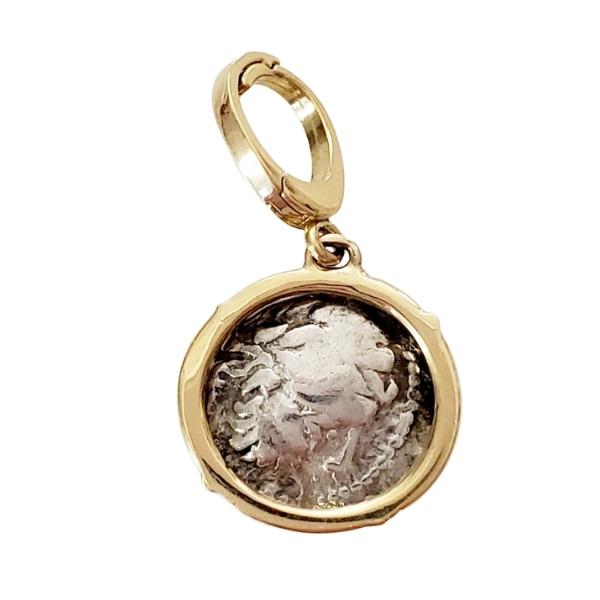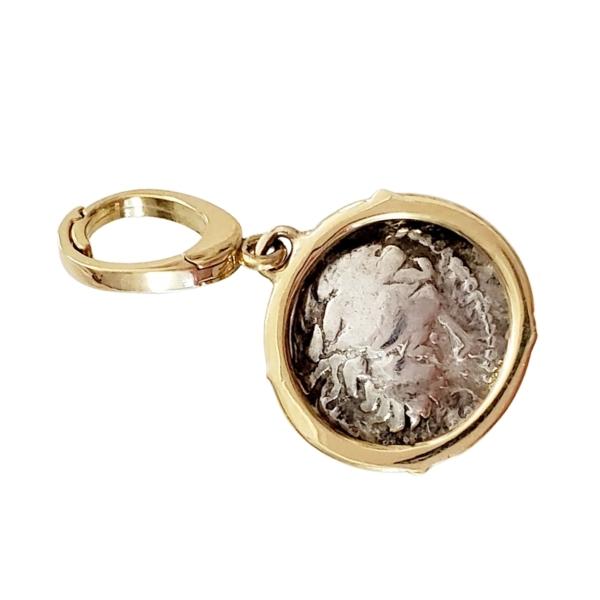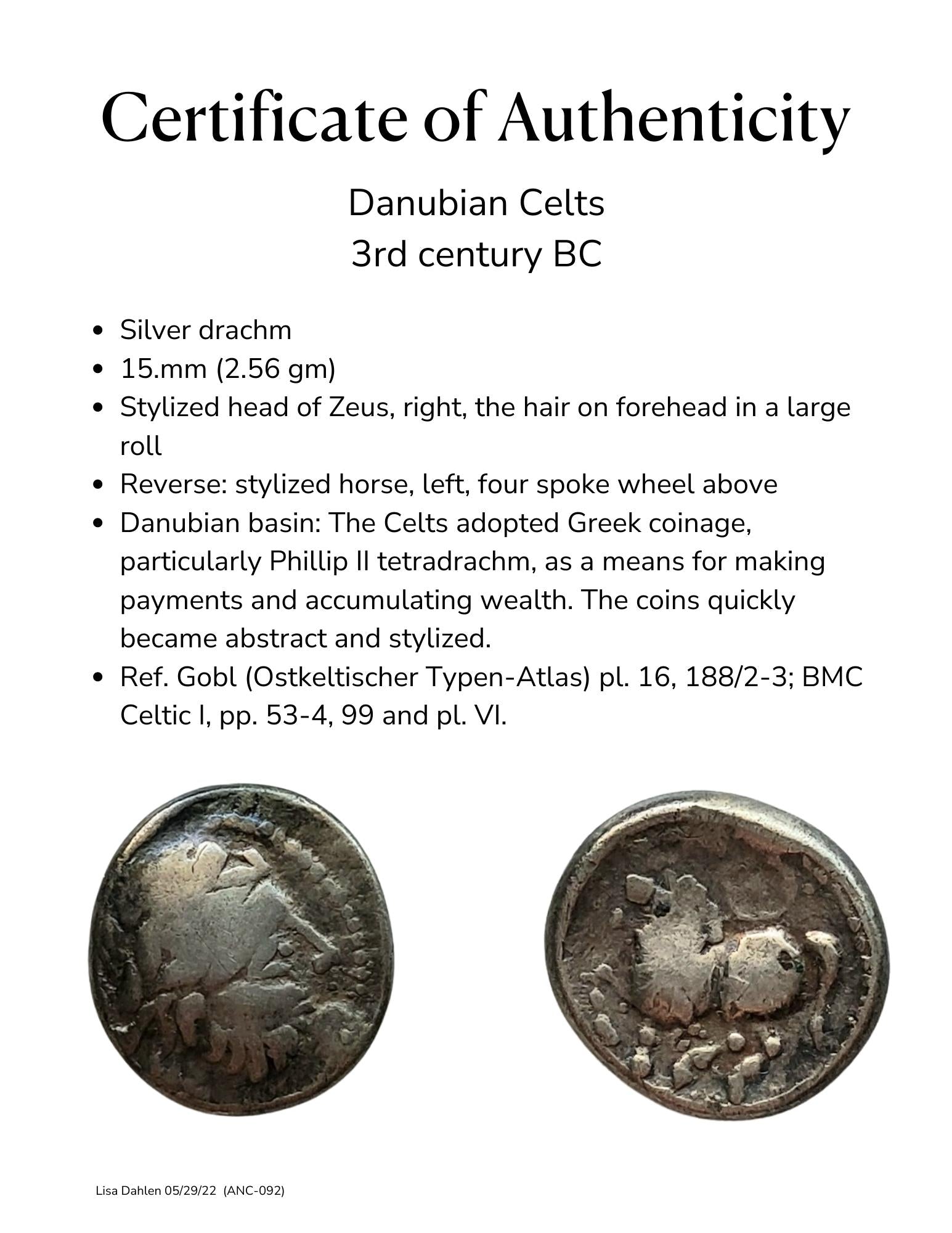



Celtic Danube Silver Drachm Coin circa 200 BC (092)
Small ancient silver coin in the stylized type of the Celtic peoples. The horse is charming and rotund, with the Celtic abstraction beginning to show in the legs.
Coin size 13mm
Hand-fabricated 18kt recycled gold mount with 18kt gold enhancer bail.
One of a kind with a Certificate of Authenticity.
Chain not included; available separately. See Chains
Dated: circa 200 BCE
Choose options




Small ancient silver coin in the stylized type of the Celtic peoples. The horse is charming and rotund, with the Celtic abstraction beginning to show in the legs.
Coin size 13mm
Hand-fabricated 18kt recycled gold mount with 18kt gold enhancer bail.
One of a kind with a Certificate of Authenticity.
Chain not included; available separately. See Chains
Dated: circa 200 BCE
